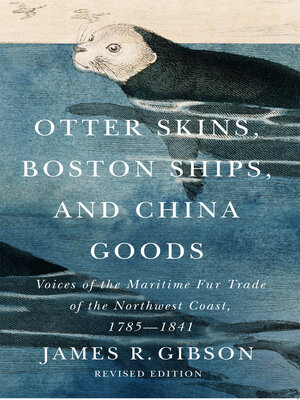Otter Skins, Boston Ships, and China Goods
ebook ∣ Voices of the Maritime Fur Trade of the Northwest Coast, 1785-1841, Revised Edition · McGill-Queen's Indigenous and Northern Studies
By James R. Gibson

Sign up to save your library
With an OverDrive account, you can save your favorite libraries for at-a-glance information about availability. Find out more about OverDrive accounts.
Find this title in Libby, the library reading app by OverDrive.



Search for a digital library with this title
Title found at these libraries:
| Library Name | Distance |
|---|---|
| Loading... |
Before contact with white people, the Indigenous peoples of the Northwest Coast traded amongst themselves and with other Indigenous groups farther inland, but by the end of the 1780s, when Russian coasters had penetrated the Gulf of Alaska and British merchantmen were frequenting Nootka Sound, trade had become the dominant economic activity in the area. The Tlingit, Haida, Tsimshian, Nootka, Salish, and Chinook spent much of their time hunting fur-bearing animals and trading their pelts to settler traders for metals, firearms, textiles, and foodstuffs. The Northwest Coast First Nations used their newly acquired goods in intertribal trade while the Euro-American traders dealt their skins in China for teas, silks, and porcelains that they then sold in Europe and America.
While previous studies have concentrated on the boom years of the fur trade before the War of 1812, James Gibson reveals that the maritime fur trade persisted into the 1840s and that it was not solely or even principally the domain of American traders. He gives an account of Russian, British, Spanish, and American participation in the Northwest traffic, describes the market in South China, and outlines the evolution of the coast trade, including the means and problems. He also assesses the physical and cultural effects of this trade on the Northwest Coast and Hawaiian Islands and on the industrialization of the New England states.
Uncovering many Russian-language sources, Gibson also consulted the records of the Russian-American, East India, and Hudson's Bay Companies, the unpublished logs and journals of American ships, and the business correspondence of several New England shipowners. No more comprehensive or painstakingly researched account of the maritime fur trade of the Northwest Coast has ever been written.







